Resources for Evolution Flipped Course
In each session of this course, we introduce concepts in evolution through iBiology videos and accompanying educator resources. Fundamentals such as Darwinian evolution, genetic variation and natural selection are covered. In addition, leading scientists present their research in areas as diverse as the evolution of multicellularity, the discovery of a fossil intermediate between fish and tetrapods, the co-evolution of plants and predators, and how viruses constantly evolve to “outsmart” their hosts.
[not_logged_in]To access the curricula you must register as an educator. If you are already registered, then log in here.
[/not_logged_in]
| Title | Video | Concepts | Duration | Video Downloads | Transcript | PDF Resources (Educators Only) |
|---|---|---|---|---|---|---|
|
Session 1: Theory Behind Evolution I
In this first session, we introduce the topic of Darwinian evolution, and the concepts of heritable traits, genetic variation, and natural selection. With: Deborah Gordon, Melina Hale, Hopi Hoekstra |
All Course Materials for this Session (Educators only) |
|||||
| Introduction to Evolution | 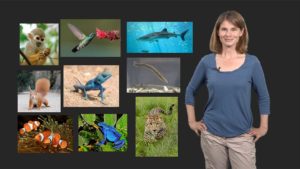
|
Darwin's theory of evolution, definition of evolution, heritable characteristics, speciation, family tree, phylogenetic tree, fossils | 19:16 |
Hi-Res Low-Res Subtitled: |
View Transcript | |
| Introduction to The genetic Basis of Evolutionary Change in Morphology and Behavior | 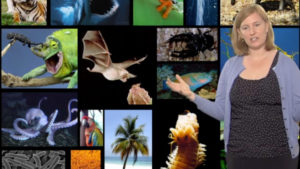
|
Darwin, genetic basis of traits, mutations | 12:46 |
Hi-Res Subtitled: |
View Transcript | |
| Local Interactions Determine Collective Behavior | 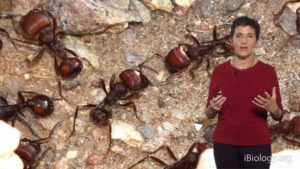
Note: Please watch original video from time 10:02 to 20:08. |
Collective behaviors, evolution of interaction networks | 10:06 |
Hi-Res Low-Res Subtitled: |
View Transcript | |
|
Session 2: Theory Behind Evolution II
This session continues our introduction to evolution, and expands on the concept of speciation, biodiversity, genetic drift, neutral evolution, founder effect, and more. |
All Course Materials for this Session (Educators only) |
|||||
| Biogeography: Studying the Distribution of Species Across Space | 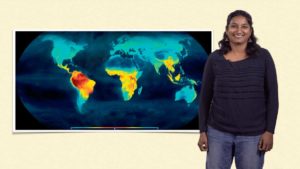
|
Biodiversity, biogeography, speciation | 23:54 |
Hi-Res Low-Res Subtitled: |
View Transcript | |
| African Genomics: Human Evolution | 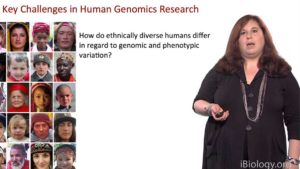
|
Gene pool, allele frequency, genetic drift, neutral evolution, genetic bottleneck, founder effect, effective population size | 36:19 |
Hi-Res Low-Res Subtitled: |
View Transcript | |
| Loss of Biodiversity in a Human-dominated World | 
Note: Please watch original video from time 15:08 to 17:06. |
Population bottleneck | 02:03 |
Hi-Res Low-Res Subtitled: |
View Transcript | |
|
Session 3: Evidence of Evolution
This session reviews the principles that support our current view of evolution. From fossils to convergent evolution, this session showcase how we use these evidence to study evolution. With: Hopi Hoekstra, Neil Shubin, Sarah Tishkoff |
All Course Materials for this Session (Educators only) |
|||||
| Finding Tiktaalik, the Fossil Link Between Fish and Land Animals | 
|
Study of fossils, Tiktaalik | 16:23 |
Hi-Res Low-Res Subtitled: |
View Transcript | |
| African Genomics: Human Evolution | 
Note: Please watch original video from time 00:00 to 6:50. |
Gene pool, allele frequency, genetic drift, neutral evolution, genetic bottleneck, founder effect, effective population size | 06:50 |
Hi-Res Low-Res Subtitled: |
View Transcript | |
| Genetics of Morphology | 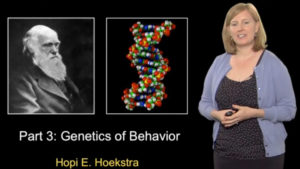
|
Natural selection, fitness, genotype determines phenotype, convergent evolution of color pattern in mice | 36:12 |
Hi-Res Subtitled: |
View Transcript | |
|
Session 4: How is Evolution Measured
In this session, we investigate some of the methods used by scientists to measure evolution, like it is Hardy-Weinberg equilibrium and phylogenetic trees. With: Melina Hale, David Haussler, Dianne Newman, Sarah Tishkoff, Youreka Science |
All Course Materials for this Session (Educators only) |
|||||
| Hardy-Weinberg Equilibrium | 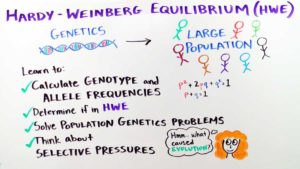
|
Hardy-Weinberg Equilibrium, population genetics, allele and genotype frequency | 10:25 | Hi-Res Low-Res | ||
| Introduction to Evolution | 
Note: Please watch original video from time 14:54 to 17:53. |
Darwin’s theory of evolution, definition of evolution, heritable characteristics, speciation, family tree, phylogenetic tree, fossils | 02:59 |
Hi-Res Low-Res Subtitled: |
View Transcript | |
| Phylogeny of Microbes | 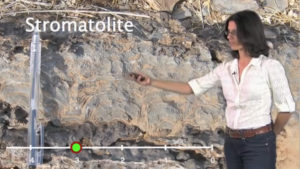
|
Microbial diversity, fossilized and modern microbes, metabolism evolution in microbes, rRNA phylogenetic tree of bacteria | 02:55 |
Hi-Res Subtitled: |
View Transcript | |
| African Genomics: Human Evolution | 
Note: The embedded video below is set to start at time 19:37. Please watch original video from time 19:37 to 24:07. |
Gene pool, allele frequency, genetic drift, neutral evolution, genetic bottleneck, founder effect, effective population size | 04:44 |
Hi-Res Low-Res Subtitled: |
View Transcript | |
| What Can We Learn From Sequencing Our Genomes? | 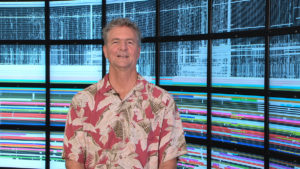
|
Heritability, evolution of species, genome sequencing | 11:06 |
Hi-Res Low-Res Subtitled: |
View Transcript | |
|
Session 5: Chemical Evolution
Scientists have wondered for years how the very first life form may have evolved. In this session, we explore how the Earth went from an environment of simple molecules to primitive cells. With: Dianne Newman, Jack Szostak |
All Course Materials for this Session (Educators only) |
|||||
| The Origin of Life on Earth | 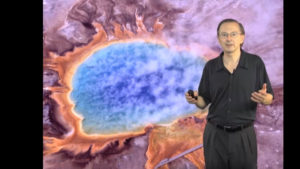
Note: The embedded video is set to start at time 8:27. Please watch original video from time 8:27 to 54:40. |
Emergence of life, conditions that support life, self-replicating protocell | 46:13 |
Hi-Res Subtitled: |
View Transcript | |
| Primitive Photosynthesis | 
Please watch original video from time 3:30 to 10:01 (Clip Link). |
Iron formations due to microbes, O2 producing microbes (via photosynthesis), evolution of chloroplasts | 06:31 |
Hi-Res Subtitled: |
View Transcript | |
|
Session 6: From Prokaryotes to Multicellular Organisms
Three scientists (Julie Theriot, Ken Miller and Nicole King) help us understand how prokaryotic life emerged evolved into larger, more complex eukaryotic organisms. With: Nicole King, Ken Miller, Julie Theriot |
All Course Materials for this Session (Educators only) |
|||||
| Evolution of a dynamic cytoskeleton | 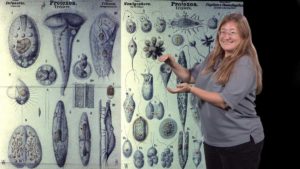
|
Evolution of cytoskeleton in eukaryotes, single common ancestor | 41:03 |
Hi-Res Low-Res Subtitled: |
View Transcript | |
| Evolution - Why it Matters | 
Note: The embedded video below is set to start at time 8:40. Please watch original video from time 8:40 to 10:52. |
Endosymbiotic evolution, chloroplasts, mitochondria | 2:32 |
Hi-Res Subtitled: |
View Transcript | |
| The origin of animal multicellularity | 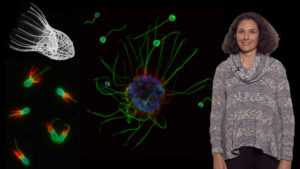
|
Origin of animals, transition from single cell to multicellular organisms | 26:53 |
Hi-Res Low-Res Subtitled: |
View Transcript | |
|
Session 7: Evolution of Vertebrates
In this session, we dig more deeply into the evolution of the complex behaviors and patterning found in vertebrates. With: Melina Hale, Neil Shubin, Youreka Science |
All Course Materials for this Session (Educators only) |
|||||
| Sexual Versus Asexual Reproduction | 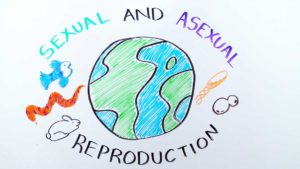
|
Types of reproduction: asexual and sexual reproduction | 05:17 | Hi-Res Low-Res | ||
| Neural Circuits and How They Evolve: A Startling Example! | 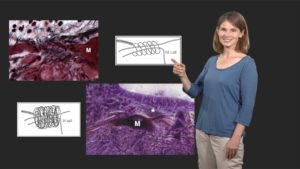
|
Evolution of neural circuits, startle response | 26:59 |
Hi-Res Low-Res Subtitled: |
View Transcript | |
| The Evolution of Limbs from Fins | 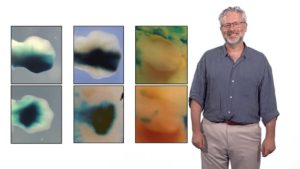
Note: The embedded video below is set to start at time 9:31. Please watch original video from time 9:31 to 26:06. |
Molecular development of fins and limbs, Hox gene patterning in fish and tetrapods | 16:35 |
Hi-Res Low-Res Subtitled: |
View Transcript | |
|
Session 8: Human Evolution
Sarah Tishkoff studies the evolution and migration of human populations, and describes the genotypic and phenotypic variation among populations speaking different African languages. With: Sarah Tishkoff |
All Course Materials for this Session (Educators only) |
|||||
| African Genomics: Human Evolution | 
|
Gene pool, allele frequency, genetic drift, neutral evolution, genetic bottleneck, founder effect, effective population size | 36:19 |
Hi-Res Low-Res Subtitled: |
View Transcript | |
| African Genomics: African Population History | 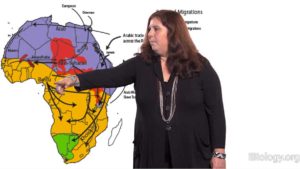
|
Genetic diversity in African and African American populations, evolutionary history of humans | 28:03 |
Hi-Res Low-Res Subtitled: |
View Transcript | |
| African Genomics: Natural Selection | 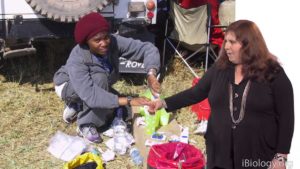
|
Natural selection in humans, evolution of lactose tolerance | 39:35 |
Hi-Res Low-Res Subtitled: |
View Transcript | |
|
Session 9: Coevolution
Coevolution occurs when two (or more) species influence each other’s evolution. In this session, we look at coevolution in several diverse systems. With: Ian Baldwin, James Estes, Jared Leadbetter, Margaret McFall-Ngai |
All Course Materials for this Session (Educators only) |
|||||
| Living Together: The Symbiosis of Host-Microbial Interactions | 
Please watch original video from time 00:00 to 10:09. |
Types of symbiosis: mutualism, commensalism, and parasitism | 10:09 |
Hi-Res Low-Res Subtitled: |
View Transcript | |
| Termites and Their Symbiotic Gut Microbes | 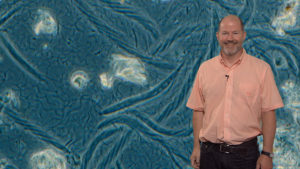
Note: This video is optional for this session. Please watch original video from time 9:07 to 37:07. |
Example of symbiosis, diversity and evolution of termites and their gut bacteria | 28:00 |
Hi-Res Low-Res Subtitled: |
View Transcript | |
| Apex predators: Sea Otters and Kelp Forests | 
Note: Please watch original video from time 1:05 to 26:50. |
Food web, apex predators, ecosystems with or without apex predators | 24:45 |
Hi-Res Low-Res Subtitled: |
View Transcript | |
| Nicotiana attenuata’s Responses to Attack from a Nicotine-tolerant Herbivore | 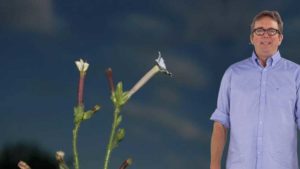
Note: Please watch original video from time 2:17 to 44:00. |
Evolutionary responses in plants | 00:48:16 |
Hi-Res Low-Res Subtitled: |
View Transcript | |
|
Session 10: Viral Evolution
In this session, Drs. Paul Turner and Harmit Malik focus on the ability of viruses to rapidly evolve and adapt to changing environments. With: Harmit Malik, Paul Turner |
All Course Materials for this Session (Educators only) |
|||||
| Introduction to Virus Ecology and Evolution | 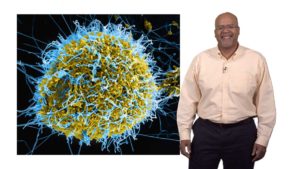
Note: This video is optional for this session. |
Biology of viruses, reproducton and adaptability of viruses to environmental challenges | 33:03 |
Hi-Res Low-Res Subtitled: |
View Transcript | |
| Virus Adaptation to Environmental Change | 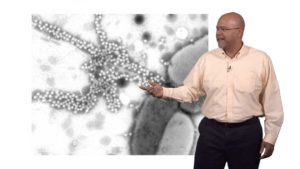
Note: Please watch original video from time 4:45 to 43:36. |
Viruses adaptability to environmental changes | 38:50 |
Hi-Res Low-Res Subtitled: |
View Transcript | |
| Host Evolution | 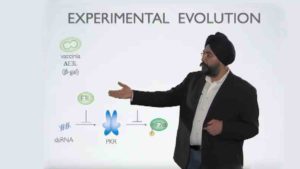
Please watch original video from time 00:00 to 21:10. |
Molecular arms races between primate and viral genomes, host evolution, host-virus interactions, natural selection of mutations, and PKR signaling evolution across primates | 21:10 |
Hi-Res Subtitled: |
View Transcript | |
| Viral Evolution | 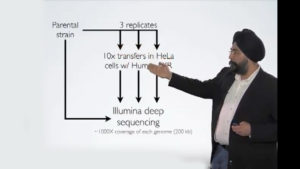
|
Virus-host co-evolution | 22:45 |
Hi-Res Subtitled: |
View Transcript | |



